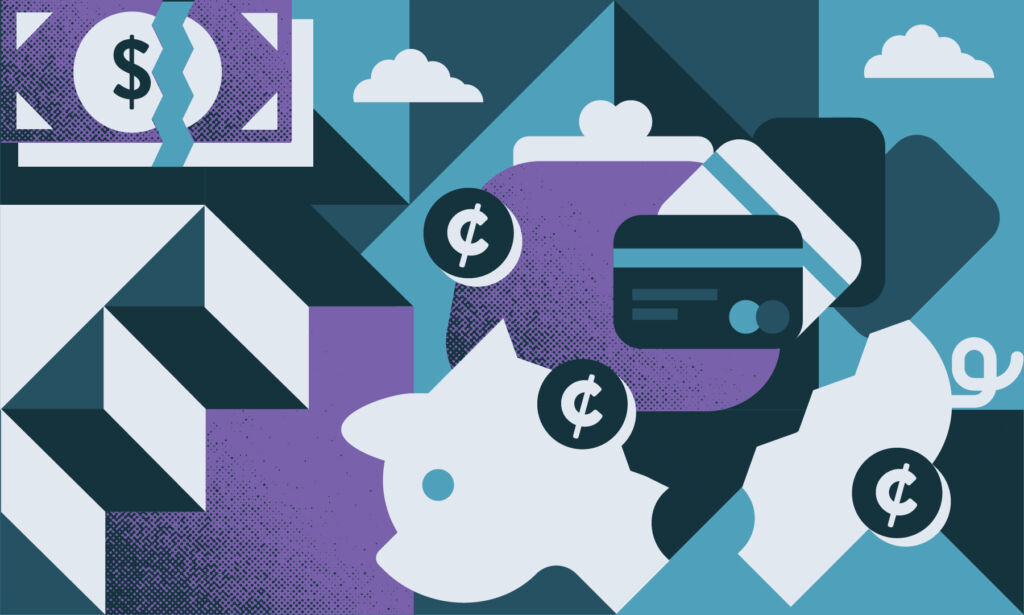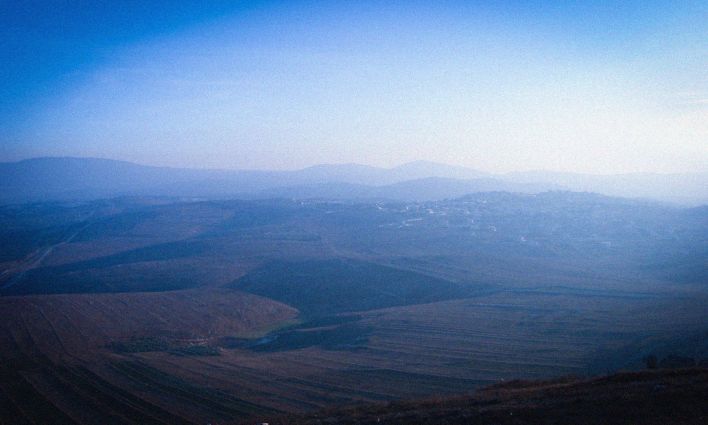Fast facts:
- In 2021, corporate pre-tax profits in Canada hit an all-time high of $445 billion, above the previous record set in 2018.
- The oil & gas extraction industry made $24.2 billion more in 2021 than pre-pandemic—in the third quarter of 2021, the industry recorded its highest quarterly profit.
- Canada’s big banks saw excess pre-tax profits of $16.1 billion in 2021 as their annual profits of $40.4 billion (average of 2018 and 2019) rose to $56.5 billion in 2021. In the second quarter of 2021, the big banks’ pre-tax profit margins also hit an all-time high.
- Food and beverage stores, such as grocery stores, made $3.9 billion more pre-tax profit in 2021 than they did before the pandemic. Grocery stores faced higher input costs, as their cost of goods hit a record high in the third quarter of 2021. But the industry hit record-high profit margins in the first quarter of 2021 anyway, squeezing more profit out of every dollar that it received in revenue.
- Food and soft drink manufacturers made $2.3 billion more than they did pre-pandemic. Their cost of goods hit an all-time high in the third quarter of 2021, but they managed to pass higher input costs up the supply chain to ensure higher profits.
- Alcohol, tobacco and cannabis manufacturers registered $2 billion more in pre-tax profits compared to pre-pandemic. The third quarter of 2021 also set a new record high in profit margins for the industry.
- Car wholesalers registered $1.1 billion in additional pre-tax profits compared to their average in 2018 and 2019. While new car prices soared, so did prices for used cars—and wholesalers profited.
- An excess profits tax would be an obvious counterbalance. Only companies that are making excess profits—and likely adding to inflation as a result—would pay these taxes. An excess profits tax on the banking industry is part of the federal Liberal-NDP deal announced last month and will likely be part of the spring budget. An excess profits tax could easily be applied to the oil and gas extraction and possibly food industries, too, thus ensuring soaring consumer prices don’t end up lining investors’ pockets.
Inflation in Canada is rising at a faster pace than usual
This analysis examines the relationship between higher inflation and excess corporate profits, by industry. Inflation is always linked to the specific prices of goods and services that can be individually examined. The main drivers of inflation are generally:
Input supply shocks: Key inputs like oil and gas prices push transport costs up for consumers and businesses alike.
Wage pressures: Workers demand higher wages, forcing the price of the goods and services they produce to go up.
Profit pressures: Companies drive their prices up faster than their costs to ensure higher profits.
As I’ve noted before, the major goods and services that are driving inflation in Canada are the rising price of gasoline, houses, vehicles and food (particularly meat). Both the increases in the price of gasoline and vehicles are often ascribed to international supply shocks, such as the high price of oil and the chip shortage for auto manufacturers. Higher food prices, and particularly meat prices, are often explained by higher input costs due to the 2021 drought in the Prairies.
But scratch the surface and there is more at play right now. The meat packing industry was hit with a class action lawsuit alleging four companies that control 85% of that industry colluded to increase prices and profits. Incidentally Cargill, one of those named, saw record profits in 2021, in part due to surging beef prices.
How much of Canadian inflation is being driven by corporate profits?
In 2021, corporate pre-tax profits in Canada hit an all-time high of $445 billion, above the previous record set in 2018. In fact, in 2021, they were $22.9 billion higher than they were in 2019, just prior to the pandemic (they were much lower in 2020 due to the impact of COVID-19).
Consumer prices increased by 6.2% between January 2020 and January 2022. This includes the large 5.1% increase in 2021 and the much smaller increase of 1% in 2020.
Households were paying $87 billion more for goods and services in 2021 than in 2019 due to inflation (6.2% inflation x $93,724 average household expenditure in 2019 x 14.98 million households).
As noted above, corporate profits have increased by $22.9 billion since 2019, which accounts for 26% of the increase in consumer prices (22.9/87). Therefore, roughly a quarter of the increase of costs for consumers could be driven by higher corporate profits.
This is a rough calculation, since corporate profits can increase for a variety of reasons, including a hike in the price of goods and services. Increased revenue is clearly the reason why profits hit an all-time high: total expenses went up by $120.7 billion between 2019 and 2021 but total revenue went up far more, at $152.2 billion.
However, total revenue comprises the amounts charged for goods and services to consumers and it includes things like dividends and other transfers from investments. Suffice to say that increases in corporate profits are on the right scale to be playing an important role in consumer price increases.
The figure below provides an interactive view of all non-financial industries, as well as the banking sector. If you hover over any point, you’ll see how much more, or less, in pre-tax profits any given industry made in 2021 compared to the average in 2018 and 2019; the bigger the circle, the bigger the uptick in profits in 2021.
Any industry to the left of the dividing line made more in 2021 than the pre-pandemic average (of 2018 and 2019), but industries that are on the right of the line made less. If you hover over the inflation-pressured areas, like gas or cars, you’ll see only those related industries to higher-inflation goods and services, highlighted to show whether they are making excess profits or not.
Gas profiteering
There are two industries that might benefit from higher gasoline prices: oil and gas extraction and petroleum manufacturing (ie. oil refining). Gas stations and wholesalers could also benefit from higher gas prices but, unfortunately, disaggregated data isn’t available for them in this dataset. While the retail mark-up (gas stations) tends to be relatively small, the wholesale margin can be substantial.
The graph shows that the oil and gas extraction industry made $24.2 billion more in 2021 than it did from the 2018 and 2019 average, when it recorded a loss. In fact, in the third quarter of 2021, the industry recorded its highest quarterly profit ever.
The other industry that might have profited from high gas prices, the petroleum manufacturing industry (i.e., oil refining), made less in 2021 than pre-pandemic. Its cost of goods (i.e., the high price of oil) hit a record high in the fourth quarter of 2021.
House prices to the moon
The cost of buying a home is the second biggest driver of inflation. Big banks making mortgage loans and the real estate industry are examples of two industries that could be driving up prices to pad their profits. Unfortunately, the real estate construction industry is combined with all other construction types in this dataset, making it hard to ascertain profits in this industry.
For their part, the big banks saw excess pre-tax profits of $16.1 billion in 2021 as their annual average pre-tax profits of $40.4 billion between 2018 and 2019 rose to $56.5 billion in 2021. In fact, the big banks’ 2021 third quarter pre-tax profits hit an all-time high.
The big banks’ profit margins also hit an all-time high. Profit margins compare how much total revenue a company keeps after covering expenses. In the second quarter of 2021, the banking industry hit its highest ever profit margin. Canada’s big banks make money on much more than just mortgages and, in many cases, their businesses extend outside of Canada, so the amount ascribed to profits on mortgages, per se, is hard to ascertain, but the takeaway here is that Canada’s big banks are clearly making excess profits compared to pre-pandemic.
The real estate industry is the other industry that could be pushing up consumer prices to pad profits. This industry contains companies that buy, sell and rent both commercial and residential real estate. It had an all-time high cost of goods in the fourth quarter of 2021, so its inputs were more expensive. However, its profits were down substantially in 2021 compared to pre-pandemic. While home sales are way up, sales and rentals of commercial real estate are way down, as Canadians continue to work from home. On the whole, this kept industry profits down in 2021.
Food prices on the rise
In the mainstream media, plenty of attention has been focused on high food prices, which are an important driver of CPI. They also hit lower-income households the hardest. Several industries are involved in the sale and production of food: grocery stores, the manufacturers of food and soft drinks, alcohol, tobacco and cannabis, as well as the agriculture industry itself. Three of these four industries have had higher pre-tax profits in 2021 than before the pandemic.
Food and beverage stores, such as grocery stores, were the biggest winners in this segment. They made $3.9 billion more pre-tax profit in 2021 than they did before the pandemic. Grocery stores faced higher input costs, as their cost of goods hit a record high in the third quarter of 2021. But these stores could pass that entire cost increase on to consumers while adding price markups. The industry hit record-high profit margins in the first quarter of 2021, squeezing more profit out of every dollar that it received in revenue compared to any other time in history.
The food and soft drink manufacturers made $2.3 billion more than they did pre-pandemic. Their cost of goods hit an all-time high in the third quarter of 2021. However, they managed to pass all of those higher input costs up the supply chain to ensure higher profits. This has created a double whammy for consumers, who are paying for higher profits for grocery stores and food manufacturers when they buy food and drinks.
Alcohol, tobacco and cannabis manufacturers registered $2 billion more in pre-tax profits compared to pre-pandemic. The third quarter of 2021 also set a new record high in profit margins for the industry.
On the other hand, the agriculture sector (ie. farmers) saw its profits cut in half in 2021 compared to pre-pandemic times, largely due to the drought in the summer of 2021. All other food industries that are higher up in the supply chain hit new all-time highs in profits and/or profit margins while farmers literally felt the heat.
Everyone gets a new car
Personal vehicle prices have risen sharply as the chip shortage has led to production shutdowns in the automotive sector. Several industries could stand to benefit from those price increases by padding their profits: vehicle manufacturers, parts manufacturers, car dealers and vehicle wholesalers. However, of these four industries, only car wholesalers have come out ahead, registering $1.1 billion in additional pre-tax profits compared to their two-year pre-pandemic average. While new car prices soared, so did prices for used cars and it is the wholesalers who have profited from this.
Car dealers also saw somewhat higher profits in 2021, along with all-time high profit margins, but the profits themselves are not at an all-time high. Record profits for car dealers peaked in 2017. Both vehicle and vehicle parts manufacturers are making the same or less now compared to pre-pandemic.
Recommendations
Several industries, particularly banking and oil and gas extraction, had record-high profits in 2021. An obvious counterbalance would be for the federal government to implement an excess profits tax. Only companies that are making excess profits—and likely adding to inflation as a result—would pay these taxes. An excess profits tax on the banking industry is part of the Liberal-NDP deal announced last month and will likely be part of the spring budget. The NDP, in the 2021 federal election, went further and advocated for an excess profits tax for all industries and not one limited to only the big banks. Given the analysis above, an excess profits tax could easily be applied to the oil and gas extraction and possibly food industries, too, as a measure to ensure soaring consumer prices don’t end up lining investors’ pockets.







